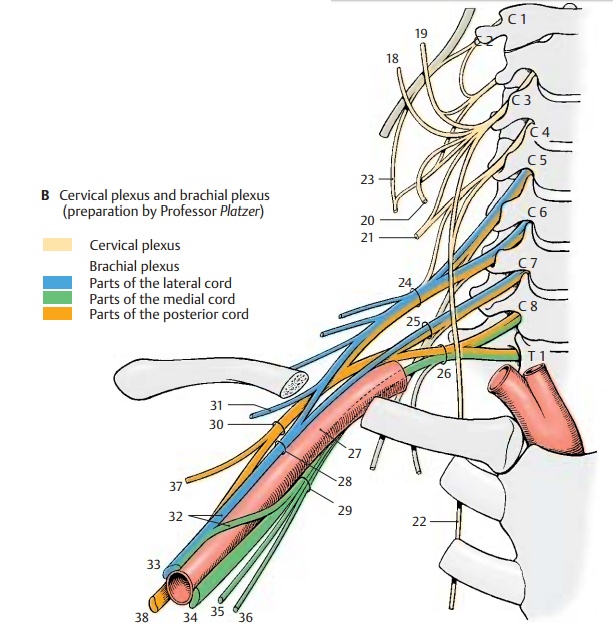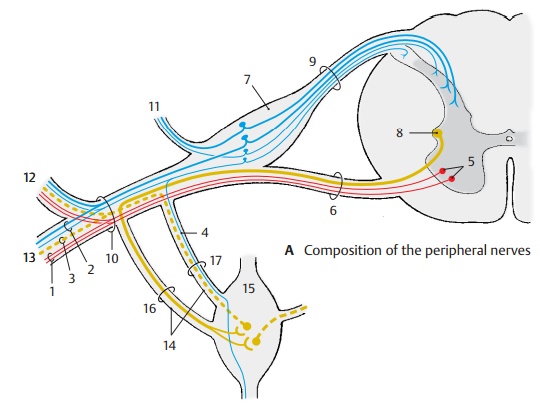Chapter: Human Nervous System and Sensory Organs : Spinal Cord and Spinal Nerves
Peripheral Nerves

Peripheral Nerves
The peripheral nerves may contain four
different types of fibers:
Somatomotor (efferent)fibers(A1)for striated
muscles
Somatosensory
(afferent)fibers(A2) for skin sensibility
Visceromotor fibers (A3) for smooth muscles
Viscerosensory fibers (A4) for inner organs

The
spinal nerves usually contain several types of fibers; they are mixed nerves. The different fibers have the following
path-ways. The somatomotor fibers pass from the anterior horn cells (A5)
through the anterior root (A6); the
somatosensory and viscerosensory fibers
originate from the nerve cells of the spinal ganglia (A7);
and the visceromotor fibers of the lateral horn cells (A8) pass mostly through
the anterior root. Anterior and posterior roots (A9) join to form the spinal
nerve (A10), which con- tains all types of fibers. This short nerve trunk then
divides into four branches:
The meningeal branch (A11), a recurrent
sensory branch extending to the spinal meninges
The posterior branch (A12)
The anterior branch (A13)
The communicating branch (A14)
The
posterior branch supplies motor fibers to the deep (autochthonous) muscles of
the back and sensory fibers to the skin areas on both sides of the vertebral
column.

The
anterior branch supplies motor fibers to the muscles of the anterior and
lateral walls of the trunk and to the muscles of the limbs; it also supplies
sensory fibers to the corre- sponding
skin areas. The
communicating branch connects with the sympathetic chain ganglion (A15)
(autonomic nervous system, p. 292). It usually forms two independentcommunicating
branches, the white com- municating branch (A16) (myelinated) and the gray
communicating branch (A17) (un- myelinated). The visceromotor fibers pass via
the white branch to the sympathetic chain ganglion, where they are relayed to
the spinal nerve as postganglionic fibers
via the gray branch.
Related Topics